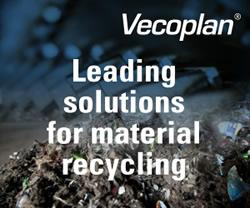Carbon Emissions are Necessary for Seawater Acidification to Produce Cheap Hydrogen
Present hydrogen technology requires trained specialist, catalyst, hydrocarbon feedstock, permanent production location, production of waste materials, and does very little to benefit the environment.
A new hydrogen gas technology invented by Scientist Michael Thomas who has filed the first patent teaching the art will be available to the world free of cost. When CO2 is pumped into seawater feed stock acidification of seawater begins under the reaction
CO2 (aq) + H2O <>H2CO3 <>HCO3− + H+ <>CO32− + 2 H+.
The present invention is a unique dissociation and ionization chemistry technology that will allow hydrogen gas production from seawater in high volumes at low costs anywhere in the world. The US Department of Energy's target goal of $ 4 a Kg will be more costly than the $ .30 Kg targeted by this invention.
The patent application describes how seawater acidification can be used in today's world of global carbon emissions to produce hydrogen gas from seawater with little energy. The improved chemical composition of the returning seawater will be favorable to marine sea life habitats. The CO2 used in the process will come from automobiles, trucks, planes, trains, ships, commercial CO2 producers, power plants, and countries wanting to improve their carbon emissions footprint.
Seawater is a worldwide FREE feedstock material unregulated, taxed or controlled byany country in the world. Ongoing experiments and data collection will allow extraction of the highest quality method for production of hydrogen gas from seawater. The expectation of making basic discoveries that can solve ocean chemistry problems while improving conditions of all ocean aquatic life environments of the world will be a goal.
The benefit of this unique nanotechnology to the WORLD is energy independence, potential forstable food supplies, protection of the world's oceans, political stability, and world security. Theseawater acidification process now destroying the world's inlets, bays, and oceans can be reversed by the development of a methodology that can deliver substantial quantities of low cost renewable hydrogen from seawater, brine or brackish water is expected.
This will greatly add to the financial stability of the WORLD and decrease dependence on drilling, oil pipe lines, expensive geopolitical refineries, toxic waste, and environmental disasters in the World's thirst for hydrocarbon fuels. The WORLD as a whole will benefit because seawater, as an energy resource, exists in abundance and is an underutilized feedstock resource by the World.
Hydrogen for fuel usage will help to reduce carbon emissions and increase higher quality energy generation. Controlling energy cost forever using an infinite renewable seawater feedstock source can put the world on a track to a healthier future.
The technology is focused on real low cost on-site production of hydrogen gas that can compete with other worldwide energy sources in the market place, which will lead to tangible, disruptive, and cleaner renewable hydrogen energy products.
The process of producing hydrogen, the most abundant element in the universe, thru acidification of seawater will keep our oceans aquatic life from becoming extinct while helping to re-vitalize the already damaged marine environment.
Its time energy is produced that makes people's lives better with the planet and oceans giving mankind what it needs, hope for the future.
Featured Product

Vecoplan - Planning and implementation of complete processing plants in refuse derived fuel production
In order to reduce the costs involved in the energy-intensive production of cement, many manufacturers are turning to refuse-derived fuels (RDF), considerably reducing the proportion of expensive primary fuels they would normally use. Solid fuels are being increasingly used - these might be used tyres, waste wood or mixtures of plastics, paper, composite materials and textiles. Vecoplan provides operators of cement plants with proven and robust components for conveying the material and separating iron and impurities, efficient receiving stations, storage systems and, of course, efficient shredders for an output in various qualities.
